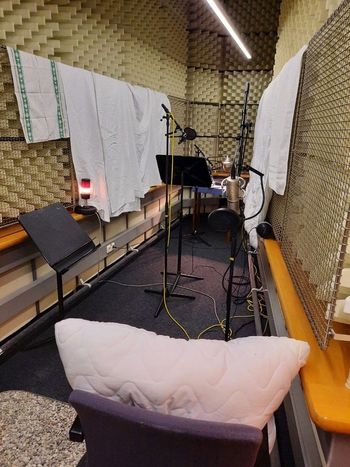|
„Hope, Sleep, and Laughter“ deals primarily with the themes of war and escape traumata, identity,
integration, assimilation, (labor) work, homeland, and the Kantian sentence "Three things help to bear the
hardships of life: hope, sleep, and laughter.
The basis for the text is Marianne Hirsch's postmemory theory. At its core is the thesis that the
children's generation turns the traumata of the parents' generation into its own "foreign memories"
precisely through their silence, thus filling the voids.
At the time of reconstruction and the economic miracle, Hugo arrives in Anni's homeland as a stranger. He
marries her, although she is pregnant with Paul. With great enthusiasm, but also with great naivety, Hugo
tries to assimilate in "his new Heimat". The radio play revolves around Hugo's struggle against his trauma
of war and flight, as well as his rejection by the locals and his failure in facing himself, with others
and the political circumstances.
What begins as a young man's great hope ends with the despairing laughter of a fool. Paul fights against
sleep, Hugo's silence, which also shapes his life.
While Hugo becomes a fool, Anni develops from a naive girl into a self-confident woman. Her laughter
remains full of hope. The fact that reconstruction and the economic miracle were also possible on the
basis of industrialization by the National Socialists and thus on the labor of compulsory workers and
concentration camp prisoners is symbolized by the blast furnace1.
„Hope, Sleep and Laughter“ spans an arc from the end of World War II to the reconstruction ( including
the " destruction of the landscape") and to the era of the economic miracle. In 2021, it will be 76 years
since the war ended. But even today, refugees come from war zones and face problems that are not so
different from Hugo's.
|

